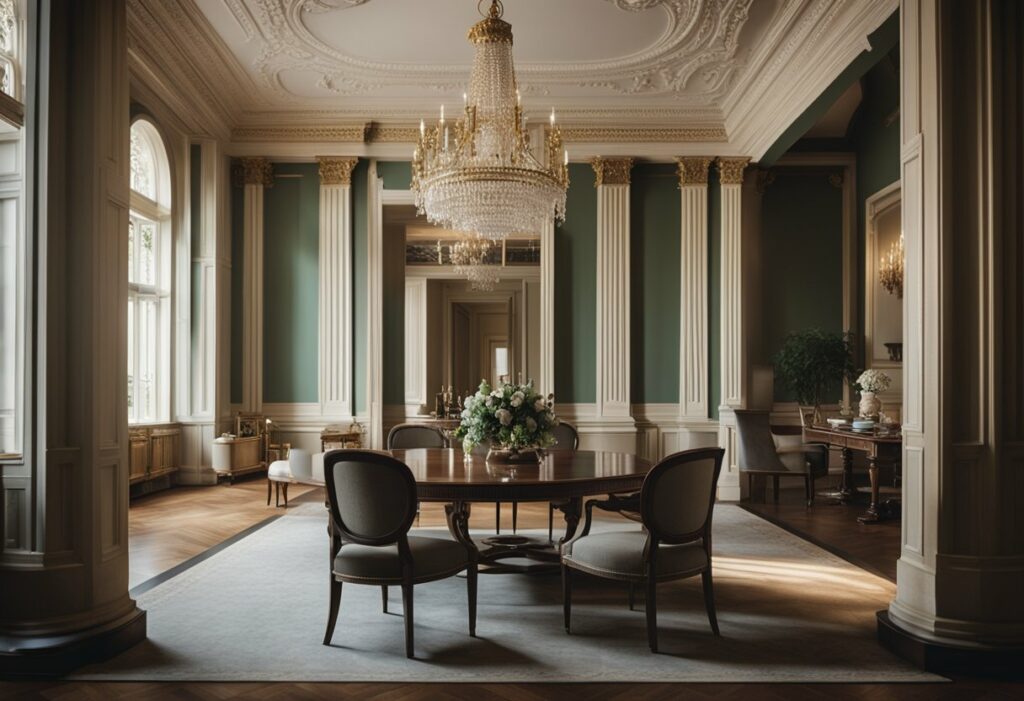Georgian Style Interior Design: Timeless Elegance for Your Home
If you’re looking to add a touch of elegance and sophistication to your home, then Georgian style interior design might just be what you’re looking for. With its roots in 18th century England, Georgian style is known for its timeless elegance and harmonious proportions. Georgian style interiors are all about creating a sense of balance and harmony, with a focus on symmetry and classical proportions.
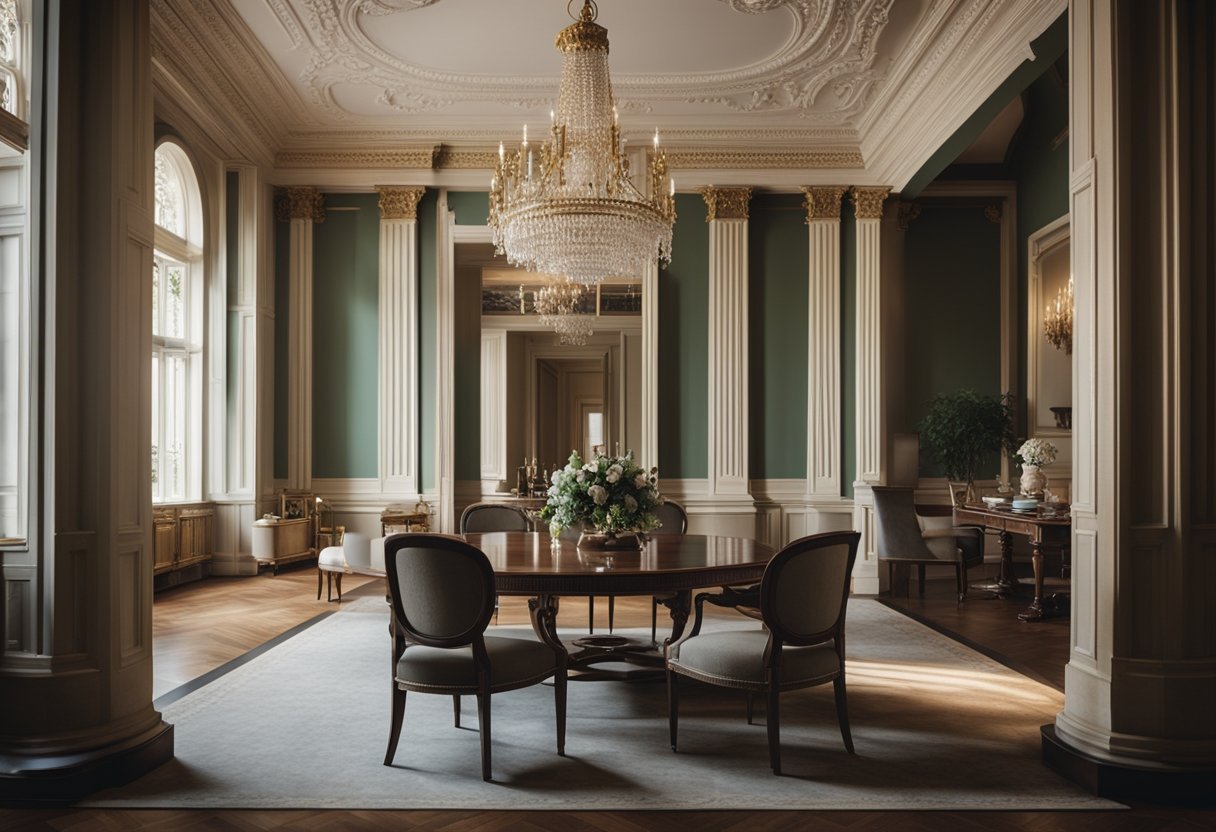
One of the key characteristics of Georgian style interiors is the use of classical architectural elements, such as cornices, mouldings, and wainscoting. These elements help to create a sense of grandeur and sophistication, while also adding a touch of historical charm to your home. Georgian style interiors also feature a subdued colour palette, with soft, muted tones that create a sense of calm and tranquillity.
If you’re looking to create a modern interpretation of Georgian style, there are plenty of ways to do so. Many designers are now incorporating more contemporary elements into their Georgian style interiors, such as modern artwork or statement lighting fixtures. By blending traditional and modern elements, you can create a space that feels both timeless and contemporary.
Key Takeaways
- Georgian style interior design is all about creating a sense of elegance and sophistication in your home.
- Classical architectural elements and a subdued colour palette are key characteristics of Georgian style interiors.
- Modern interpretations of Georgian style can incorporate contemporary elements to create a space that feels both timeless and contemporary.
Key Characteristics of Georgian Style Interiors
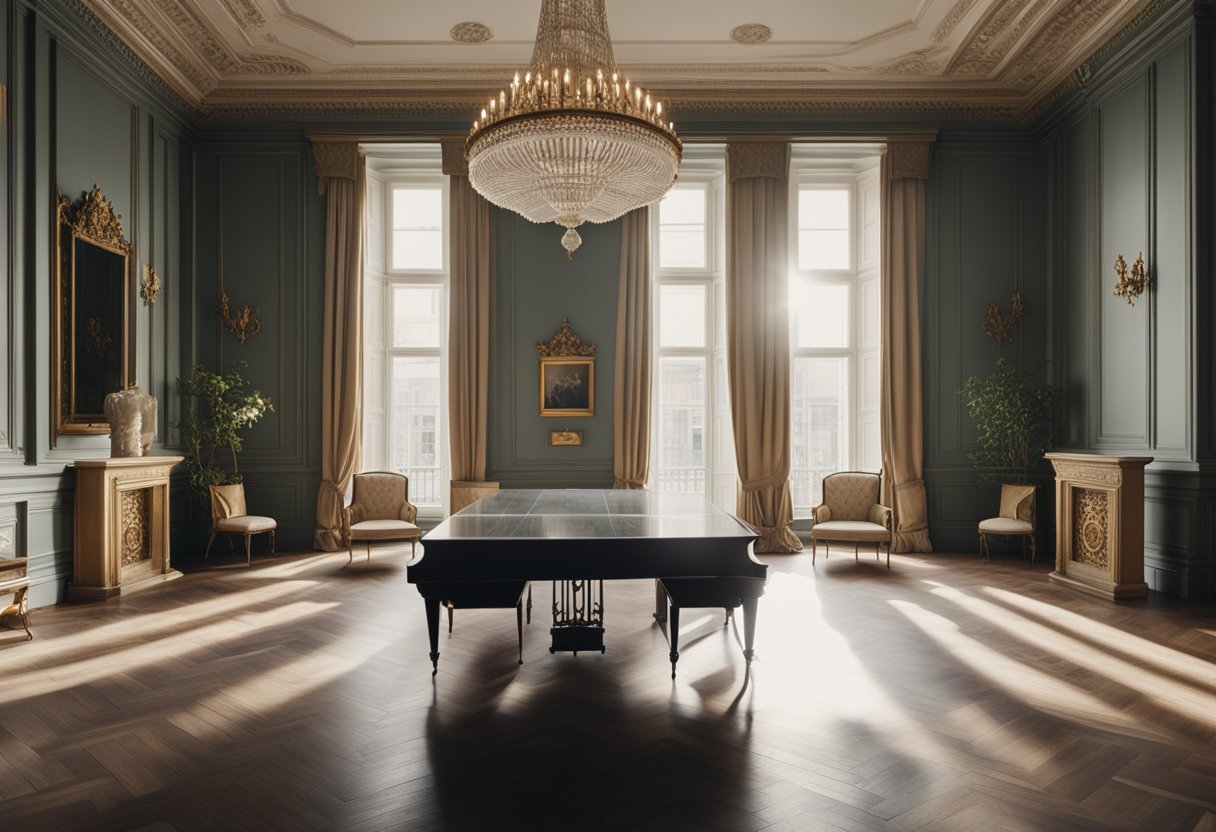
Georgian style interiors are known for their elegance, symmetry, and attention to detail. The Georgian period, which lasted from 1714 to 1830, was marked by a revival of classical architecture and design. Georgian style interiors are characterized by their use of architectural features, color schemes, and furniture that reflect the style of the period.
Architectural Features and Symmetry
One of the key characteristics of Georgian style interiors is their use of architectural features and symmetry. Georgian interiors often feature grand entrances with elaborate doors, intricate moldings, and symmetrical layouts. Fireplaces are a common feature in Georgian interiors, and they often serve as a focal point in the room. Ceilings are typically high, and natural light is maximized through the use of large windows.
Colour Schemes and Textiles
Georgian style interiors are known for their use of rich, deep colors and luxurious textiles. The color palette typically includes shades of red, green, blue, and gold. Textiles such as silk and velvet are commonly used for upholstery and drapery. Wallpaper is also a popular choice for Georgian interiors, and it often features intricate patterns and designs.
Furniture and Decorative Arts
Georgian furniture is characterized by its elegance and craftsmanship. Furniture pieces are often made of wood, and they feature intricate carvings and details. Parquet floors and porcelain accents are also common in Georgian interiors. Mirrors and glass are often used to reflect light and create a sense of space. Lighting fixtures are typically ornate and feature intricate designs.
In summary, Georgian style interiors are known for their attention to detail, symmetry, and use of rich colors and luxurious textiles. The architectural features, furniture, and decorative arts of the period reflect the elegance and craftsmanship of the time. Whether you are looking to create a traditional Georgian interior or incorporate some of its key elements into a modern space, the style’s timeless appeal is sure to impress.
Modern Interpretations and Adaptations
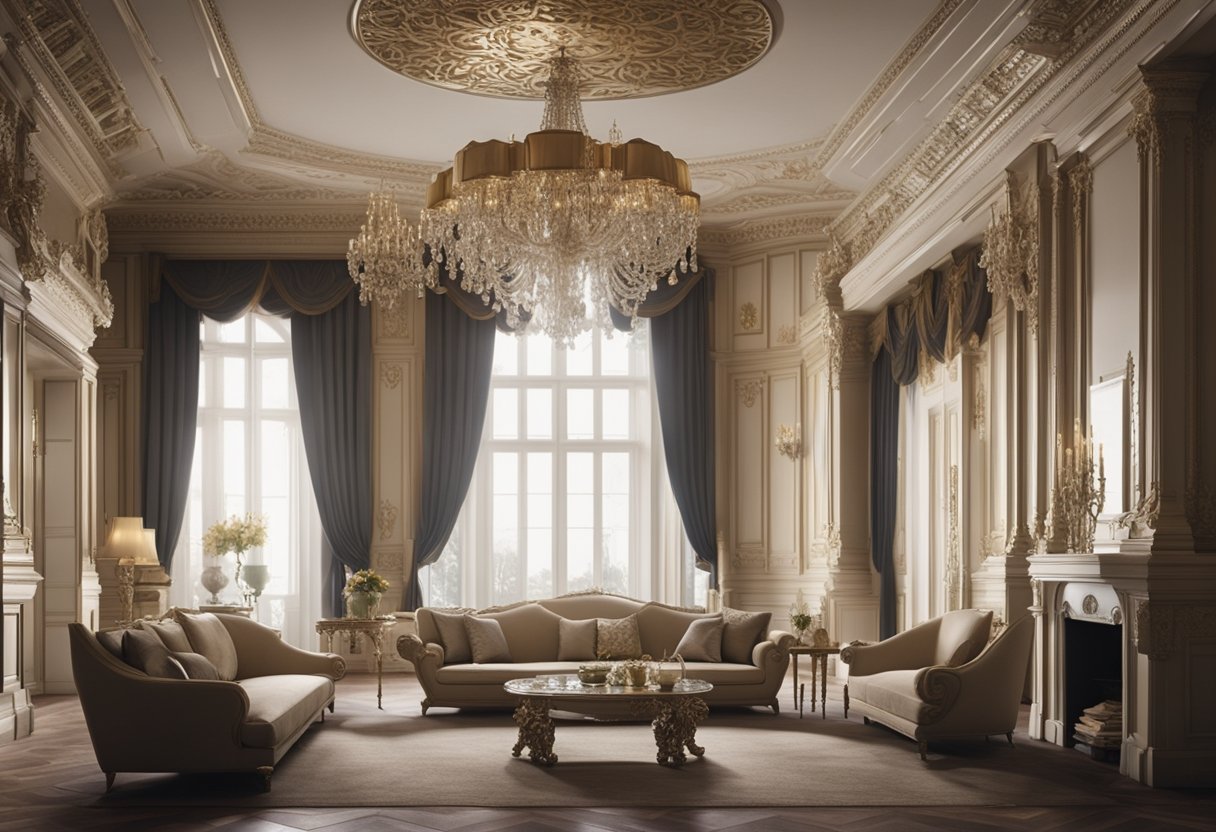
Georgian style interior design has never been more relevant than it is today. As homeowners seek to balance classical influences with contemporary design elements, Georgian interiors offer a level of adaptability that few other styles can match. The result is a style that is at once timeless and modern, with a personal style that is uniquely your own.
Contemporary Georgian Design Elements
One of the keys to modern Georgian interiors is the use of contemporary design elements. This can include everything from bold geometric patterns to sleek, minimalist furniture. By integrating these elements into your Georgian interiors, you can create a space that feels both classic and contemporary.
Another way to add a modern touch to your Georgian interiors is by incorporating baroque style elements. These can include ornate mirrors, chandeliers, and other decorative pieces. By pairing these with more contemporary pieces, you can create a space that feels both timeless and modern.
Integrating Georgian Aesthetics in Urban Spaces
Georgian interiors are not just for country estates and grand homes. They can also be adapted to suit urban living spaces. One way to do this is by paying close attention to detail. Georgian interiors are known for their attention to detail, so make sure to incorporate this into your space.
Another way to integrate Georgian aesthetics into urban spaces is by using Georgian color palettes. These can include deep, rich colors like burgundy, navy, and forest green. By pairing these with lighter, more modern colors like grey and white, you can create a space that feels both classic and contemporary.
In conclusion, Georgian style interior design offers a level of adaptability that few other styles can match. By integrating contemporary design elements and paying close attention to detail, you can create a space that feels both timeless and modern. Whether you are designing a grand estate or a small urban apartment, Georgian interiors offer a personal style that is uniquely your own.
Frequently Asked Questions
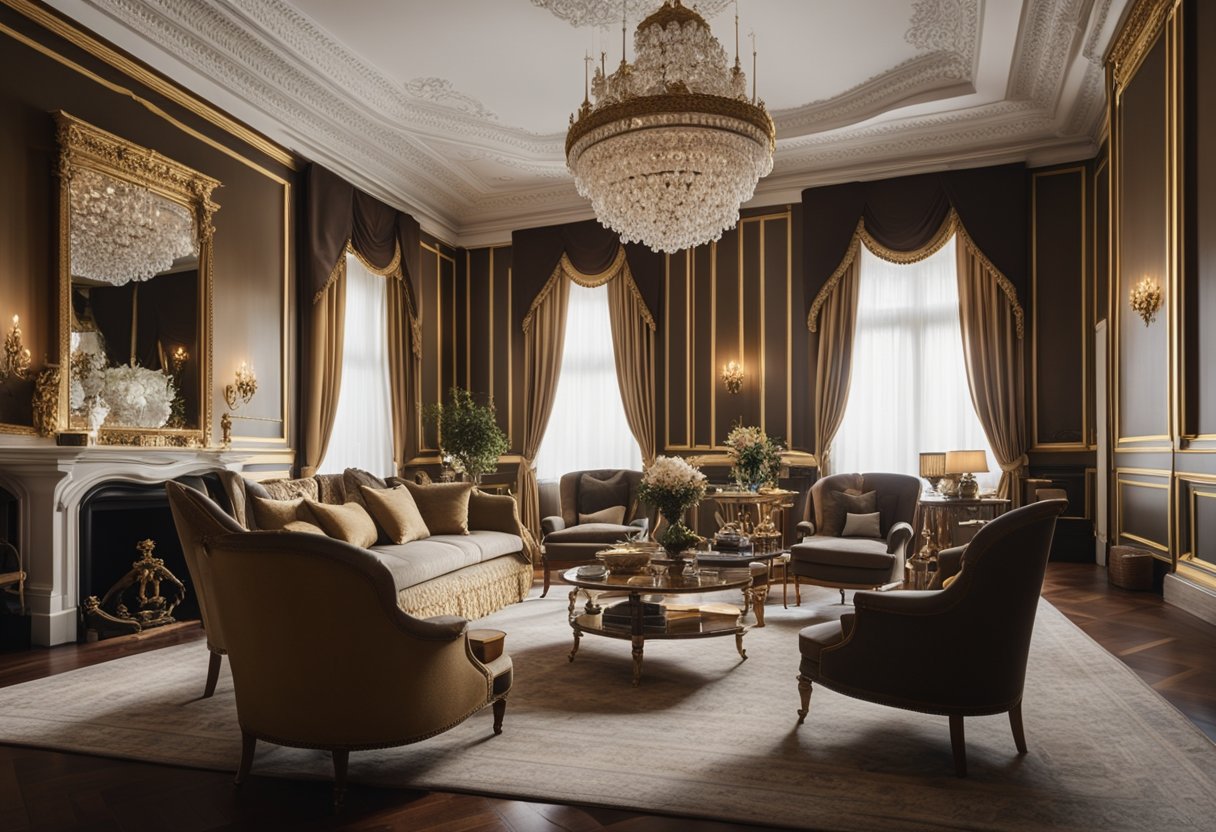
What are the hallmarks of a Georgian style living room?
Georgian style living rooms are characterized by their elegant and symmetrical design. These rooms typically feature a central focal point, such as a fireplace, and are often decorated with ornate plasterwork, mouldings, and ceiling roses. Georgian living rooms also tend to have tall windows with shutters, allowing for plenty of natural light to flood the space.
How can Georgian design principles be adapted for modern homes?
Georgian design principles can be adapted for modern homes by incorporating elements of the style into contemporary interiors. For example, you could use Georgian-inspired wallpaper or fabrics, or add Georgian-style mouldings to your walls. You could also incorporate Georgian-style furniture, such as a wingback armchair or a four-poster bed, into your home.
What colour palette is traditionally associated with Georgian interiors?
Georgian interiors are traditionally associated with a muted colour palette, featuring shades of cream, grey, and pastel colours. These colours are often used in combination with bold accents, such as deep blues or greens, to create a sense of depth and contrast.
Which key features distinguish Georgian style homes’ interiors?
Key features that distinguish Georgian style homes’ interiors include their symmetrical design, ornate plasterwork, and tall windows with shutters. Georgian homes also tend to have grand entrance halls, with sweeping staircases and decorative mouldings.
How does Georgian style interior design balance ornamentation and simplicity?
Georgian style interior design balances ornamentation and simplicity by using a restrained colour palette and incorporating ornate details in a subtle way. For example, a Georgian-style living room might feature a simple colour scheme of cream and blue, with ornate plasterwork and mouldings adding a touch of elegance to the space.
What is the historical evolution of the Georgian interior design aesthetic?
The Georgian interior design aesthetic evolved during the reigns of the four King Georges of England, from 1714 to 1837. The style was heavily influenced by the classical architecture of ancient Greece and Rome, and was characterized by its symmetry, proportion, and ornate details. Georgian style interiors were designed to be elegant and refined, reflecting the social status of the upper classes who lived in these homes.

